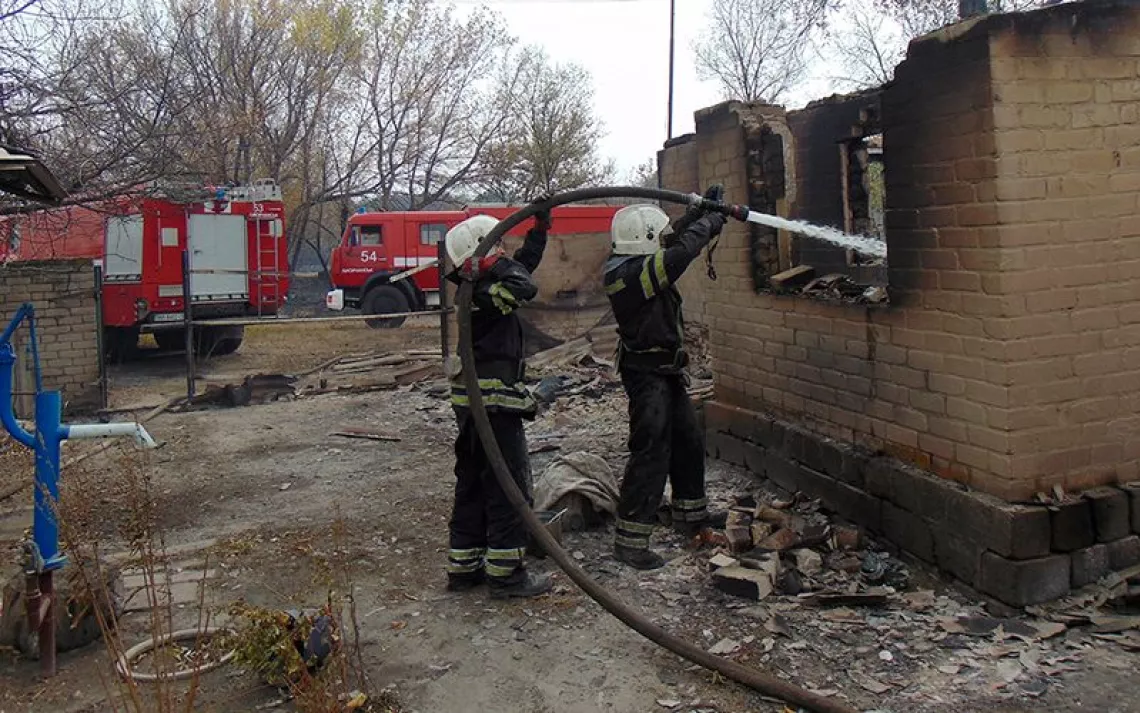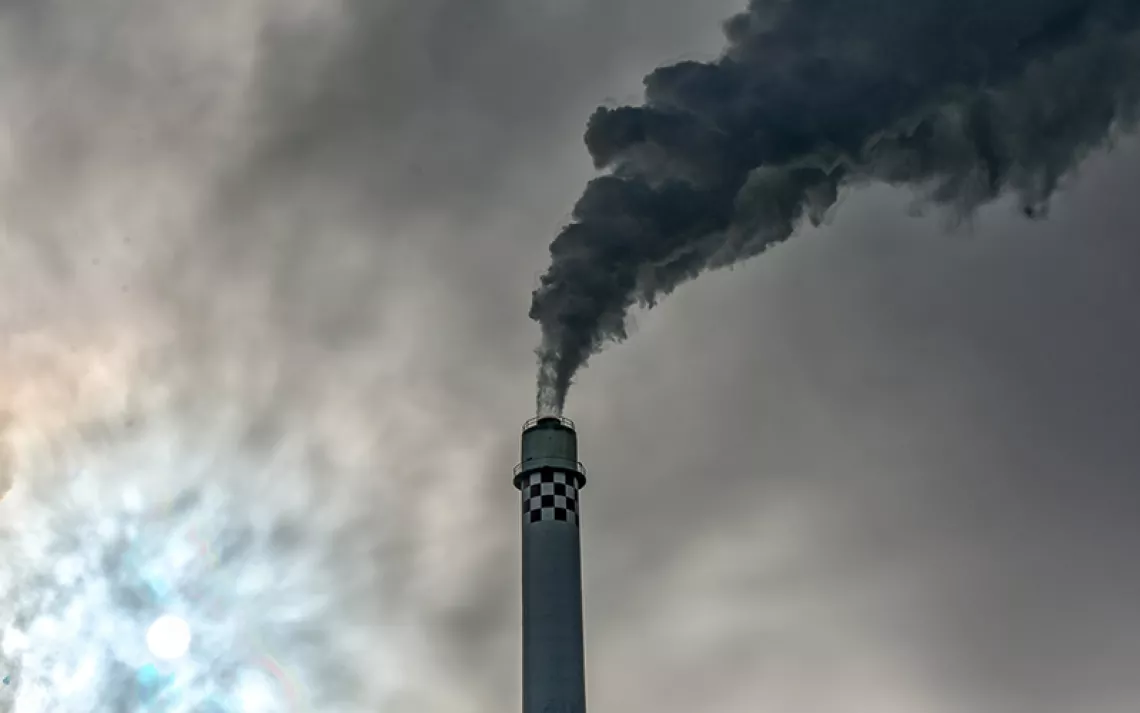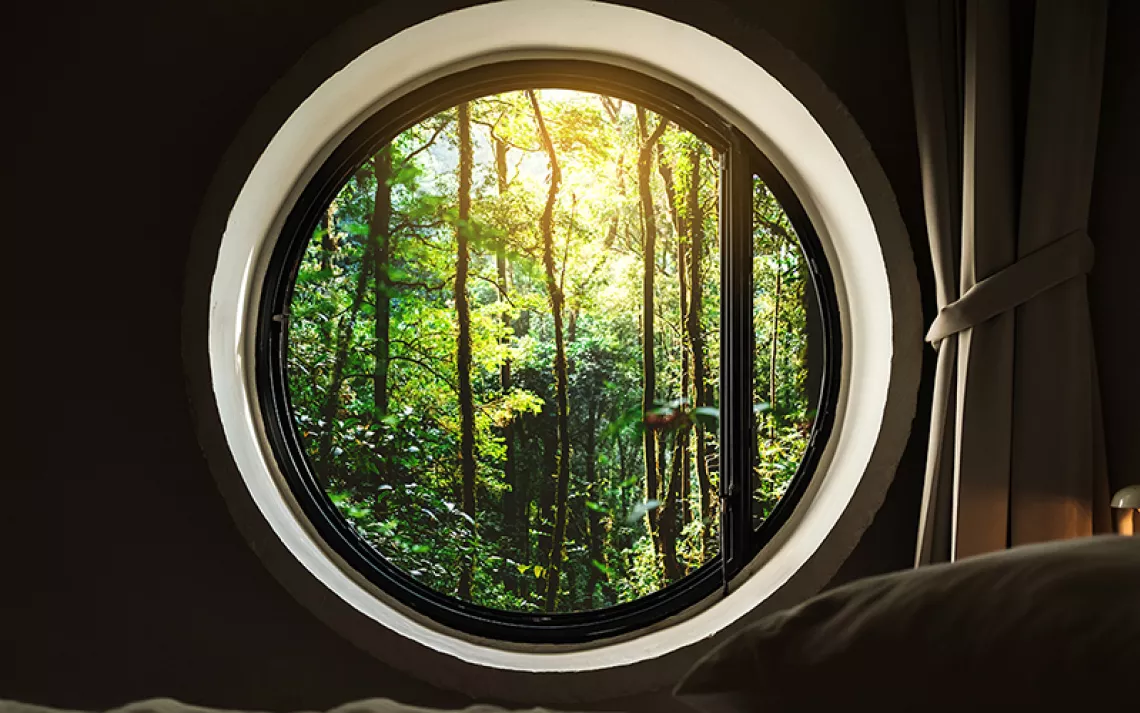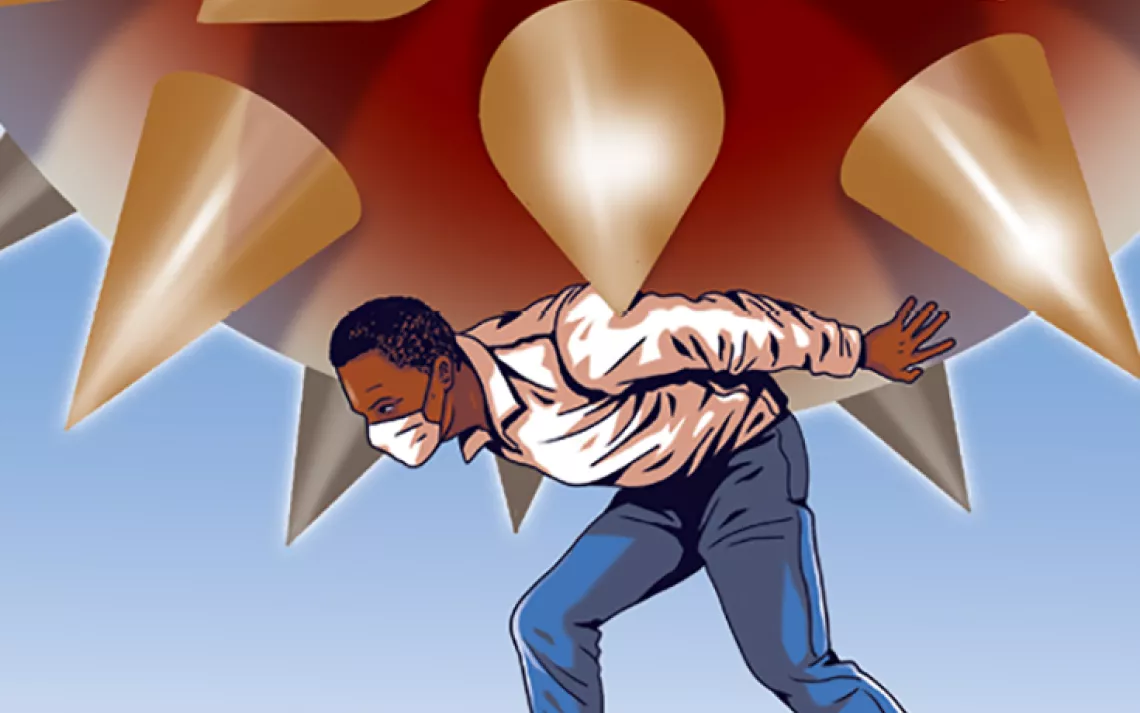Nature Is Returning
The pandemic gives us a chance to reset our relationship with the animal world
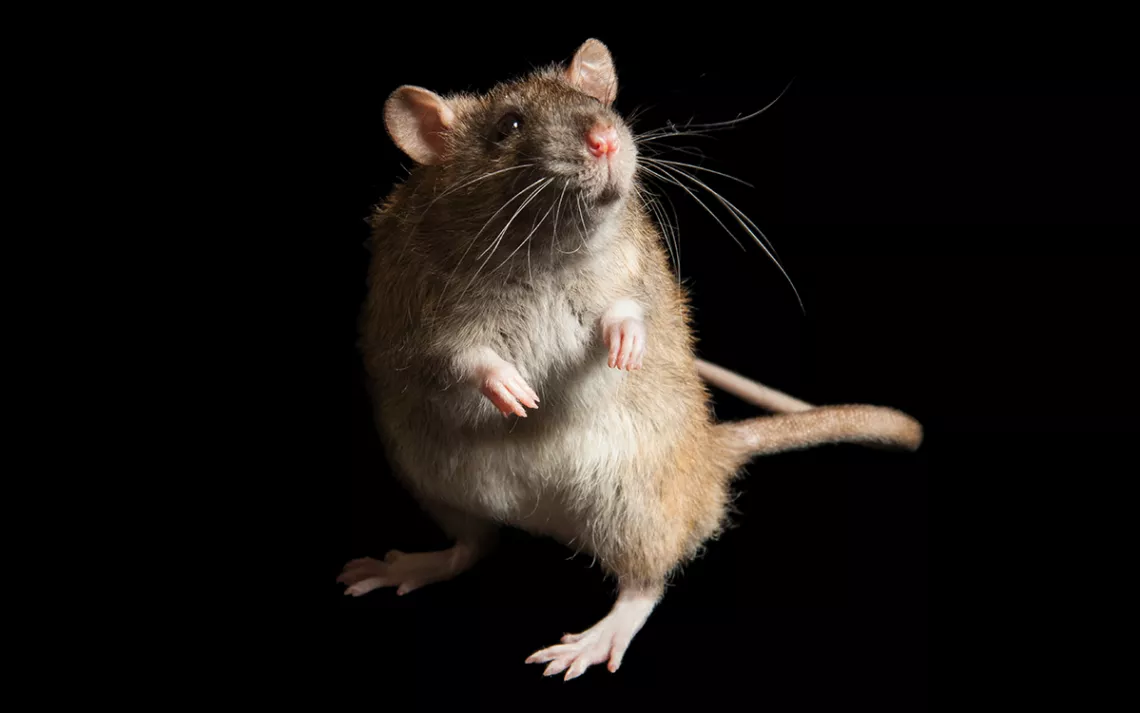
Photo by Joel Sartore/The Photo Ark
EARLY IN New York City's pandemic lockdown, while masked, gloved, and lost in thought, I walked past one of Brooklyn's diviest of dive bars. Suddenly, I heard screams inches from my feet, from within the shuttered bar's normally overflowing but now barren garbage bins: Squee! Squeee!! Squeeee!!! I hurried across the street to escape. Even as the noise receded, I couldn't shake the unsettling feeling that I had brushed up against some dark, David Lynchian underworld.
I later learned that the sound was most likely that of rats eating one another. While people were sheltering in place, aggressive rat colonies, deprived of the once-inexhaustible garbage stream that restaurants put out every night, were doing what was necessary to survive.
"Pest-control operators were finding remnants of eviscerated rats left on the street," says Robert Corrigan, an urban rodentologist. "Some dominant males and females literally ate their own young." Poison bait boxes, which savvy rodents normally shun, began turning up completely empty. Between the poison, starvation, and cannibalization, thousands of rats likely died, Corrigan says. Survivors probably descended into that old, dependable rodent stronghold, the sewer, where there's always a steady supply of human and dog feces.
The rats won't be gone for long, though. "They've taken a hit," Corrigan says, "but as soon as we start giving them food again, we'll be back to business as usual."
WHETHER WE (OR THEY) like it or not, the creatures we share the planet with are ineluctably tied to us—a fact laid bare by the COVID-19 pandemic. The virus that causes the disease, SARS-CoV-2, almost certainly sprang from the commercial wildlife trade, a fact that forces us to acknowledge the relationship. Wildlife-related pandemics are an extreme example: We can exploit nature, but at some point there will be serious repercussions for our species as well. We greatly influence wildlife—from the lowly rats of New York City to the lofty elephants of Zimbabwe—and it influences us in turn.
That mutual influence became obvious last spring, when humanity hunkered down and the animal world quickly noted our absence. Some species that had grown dependent on us were left to scramble, while others, emboldened, began reclaiming places normally overrun with people. The national parks, which experienced a surge of visitors in the immediate aftermath of the shutdown, closed their gates one by one as the pandemic progressed. That's when the animals took over. At Timpanogos Cave National Monument in Utah, staff noted bats roosting for the first time in at least two decades. From Yosemite to Yellowstone, deer, bears, and bison strolled through parking lots and picnic areas. (Ironically, in seeking to become closer to wild nature, humans often drive it away.)
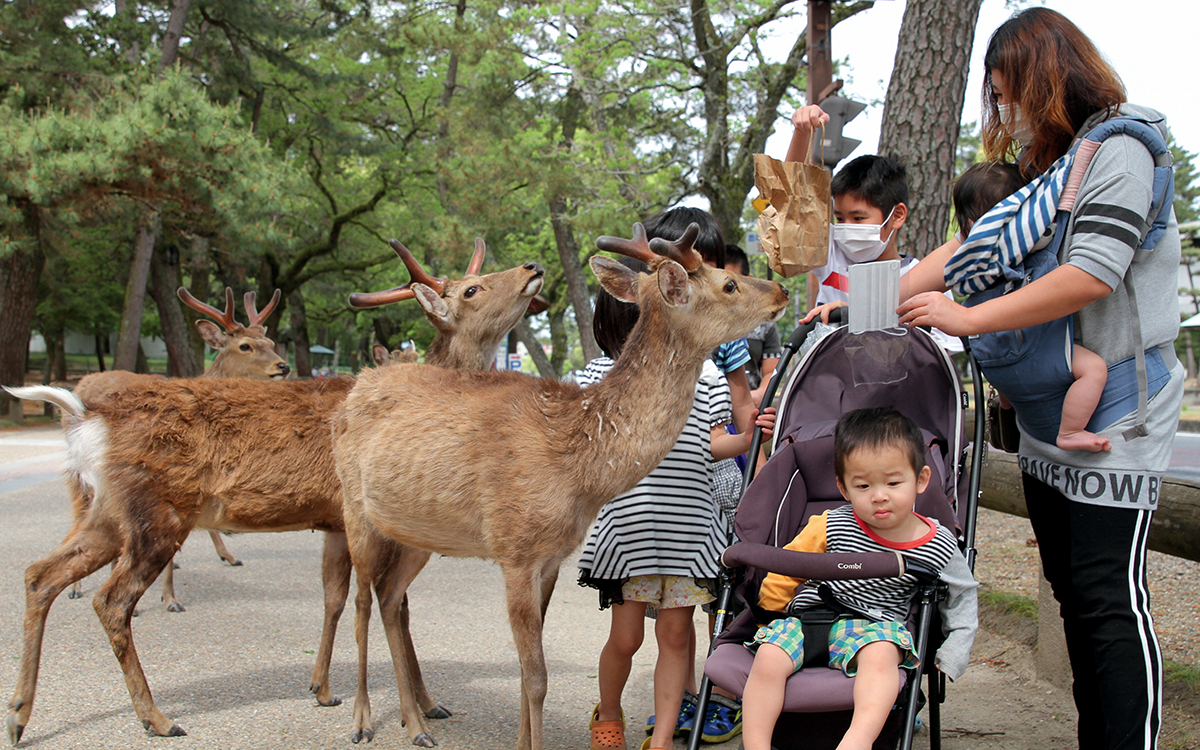 Feeding deer in Japan. | Photo by Asahi Shimbun/Getty Images
Feeding deer in Japan. | Photo by Asahi Shimbun/Getty Images
In the days of quarantine, reports of wildlife wandering into suburban and urban areas abounded. While some viral headlines proved to be wishful thinking (dolphins did not take up residence in Venice's canals) or fake (a herd of elephant lushes did not raid a Chinese village for booze), many remarkable stories were quite true. A juvenile mountain lion prowled the deserted sidewalks of San Francisco. Javelinas took over street corners in Phoenix. Mountain goats roamed Llandudno, Wales. Social media spread a heartening, widely embraced message: Nature is back. Nature will find a way.
"The feeling of our cities not being broken systems and that they can still harbor life—and that that life is thriving—is really important," says Christopher Schell, an urban ecologist at the University of Washington, Tacoma. While some animals did become more active during the lockdown, he emphasizes, of equal importance is that people started paying attention. As the world slowed, we had more time to observe what has been happening in our backyards and neighborhood parks all along.
THE EFFECT OF THE PANDEMIC on human-habituated animals raises questions about where we should draw the line in our interactions with them. Consider, for example, Nara, Japan: Each year millions of people come to see the 1,400 semi-tame deer that live in a park there. Nearby shops sell rice-bran-and-wheat "deer crackers" that the deer gobble up. But in the spring, as tourists and their crackers disappeared, deer began turning up in residential and shopping areas far from the park, eating grass and scavenging garbage. The Mainichi Shimbun newspaper reported that authorities fielded twice the number of deer-related emergency calls compared with the same period in 2019. By June, however, the deer had settled into a new, people-free rhythm—sans crackers. Locals noted to the Asahi Shimbun that the animals' normally watery droppings resembled firm black beans, leading some to speculate that the lack of snack food had forced the deer to shift to a healthier natural diet.
Not all habituated wildlife have made such a peaceful transition. In South and Southeast Asia, before COVID-19, some species of macaques were surviving on garbage and handouts at temples and tourist sites, partly because rampant deforestation has destroyed their natural habitat. This unhealthy dependency was highlighted in a viral video "brawl" in which hundreds of macaques fought over a cup of yogurt in the streets of Lopburi, Thailand, shortly after the country's travel ban went into effect. "Provisioning and its consequences form a vicious cycle," says Asmita Sengupta, an ecologist at the Ashoka Trust for Research in Ecology and the Environment in Bangalore, India. In addition to declining habitat, she says, lack of natural food sources, plentiful human handouts, and poor food-waste management may have contributed to that violent scene.
In some cases, people have gone to great lengths to maintain their unnatural relationships with wild animals. When the Cayman Islands closed its borders and enacted strict lockdown measures, including a ban on boat use, rumors circulated that people were sneaking out under cloak of darkness to feed a population of 80 to 120 habituated stingrays. The rays, which live at sites called the Sandbar and Stingray City, are the Caymans' most popular tourist attraction, sometimes seeing up to 1,500 visitors at a time. Without the free food provided by tourists, however, tour operators feared that the rays (a species that is not normally gregarious) would leave the area permanently. Eventually, the government succumbed to public pressure and began carrying out daily feedings.
"We didn't want to do this, but people were insisting the rays be fed," says Timothy Austin, deputy director of research at the Cayman Islands Department of Environment. The artificially congregating rays may be a key part of the islands' tourism industry, he says, but the message sent by feeding them "is not a good one."
MARAUDING MONKEYS and cracker-addicted deer will be transient stories of the pandemic; the animals' behavioral changes will last only as long as the human world stays in retreat. But there may well be other, more long-term effects on the many terrestrial and marine parks around the world that depend on tourist dollars to stay afloat. Countries dependent on foreign visitors have seen funding for protected areas dry up overnight, a development that has "laid bare the fragile situation upon which a lot of management budgets are based," says Fanny Douvere, head of the marine program at the UNESCO World Heritage Centre. "Even for flagship marine protected areas, a large majority of nations aren't really financing them."
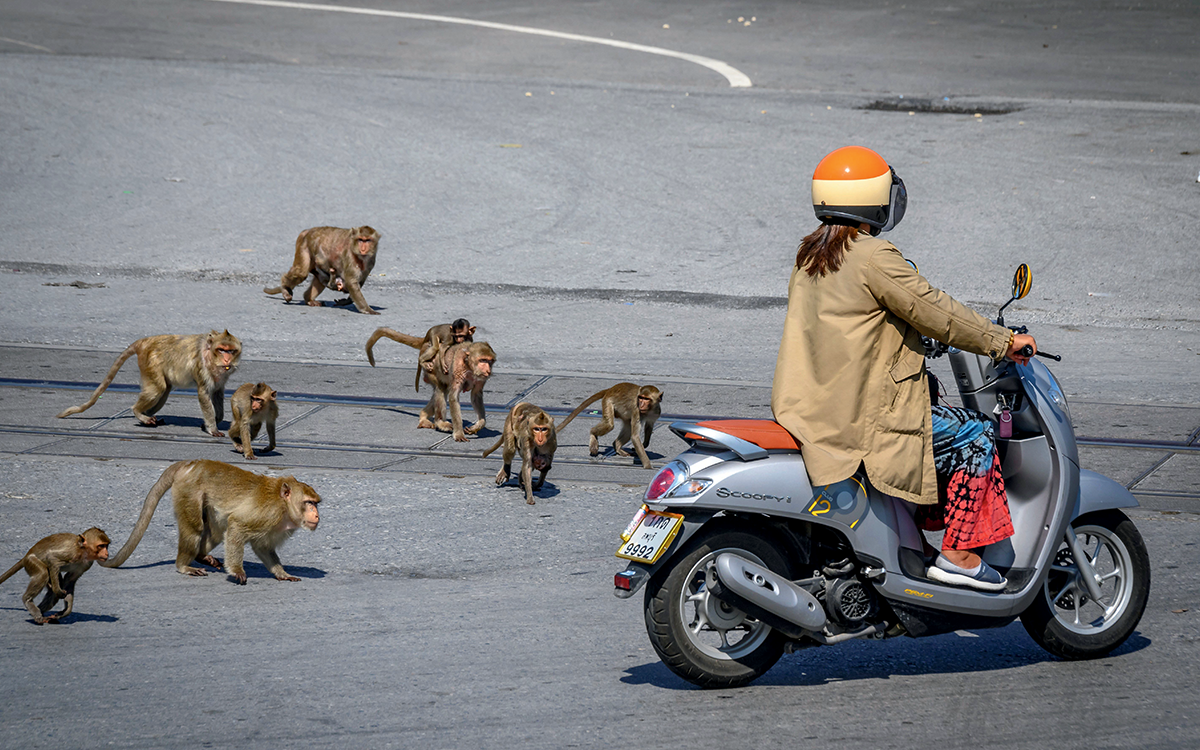
Macaques approach a woman on a scooter on a street in Thailand. | Photo by Mladen Antonov/Getty images
In numerous marine parks, rangers' salaries can no longer be paid, critical scientific monitoring has ground to a halt, and illegal fishing appears to be on the rise. Many terrestrial protected areas are likewise experiencing an uptick in bushmeat poaching, much of it likely driven by people out of work. In May 2020, in Sri Lanka, a rare black leopard—one of only three recorded in the past decade—was killed by a snare trap probably intended for deer. In India, researchers found that the number of animals illegally killed for meat nearly doubled during the national lockdown, compared with the same time last year. "There's urban-to-rural migration going on where people are going back to villages because of unemployment, and they have no options apart from being able to hunt, log, fish, and draw down on natural resources," says Joe Walston, the lead of global conservation at the Wildlife Conservation Society.
A "cataclysmic decline in funding" has hit Africa's protected areas especially hard, according to Kathleen Fitzgerald, a lead in the Africa division of Conservation Capital, a company that develops business-driven solutions for conservation. According to a paper Fitzgerald and her colleagues published in July in Nature Ecology and Evolution, COVID-19 caused booking declines of 75 percent or greater for nine out of 10 African tour operators, threatening millions of jobs and potentially leading to the shrinking or downgrading of the most heavily affected protected areas.
Zimbabwe started 2020 on a high note, with ample savings in the bank and funds set aside in its conservation budget to recruit a thousand new rangers by June and to refurbish facilities at a number of national parks. "Our balance sheet was looking very good," says Patience Gandiwa, an executive technical adviser at Zimbabwe's Parks and Wildlife Management Authority. But because conservation in Zimbabwe is 100 percent self-financed, primarily by tourism, the pandemic's effects have been "quite devastating," Gandiwa says, adding that the government rejected a proposal that she and her colleagues put together for emergency funding. As resources for protecting wildlife grow scarce and local people become more desperate, Gandiwa expects to see more "poaching for the pot," as she puts it. That said, Gandiwa does not think the pandemic will spell the end of conservation in Zimbabwe. "We have been bankrupt before, isolated and sanctioned from benefiting from various donor funds, and we still sustained a vast network of protected areas," she says. "Conservation is embedded in our cultural fabric, even without a penny in the bank."
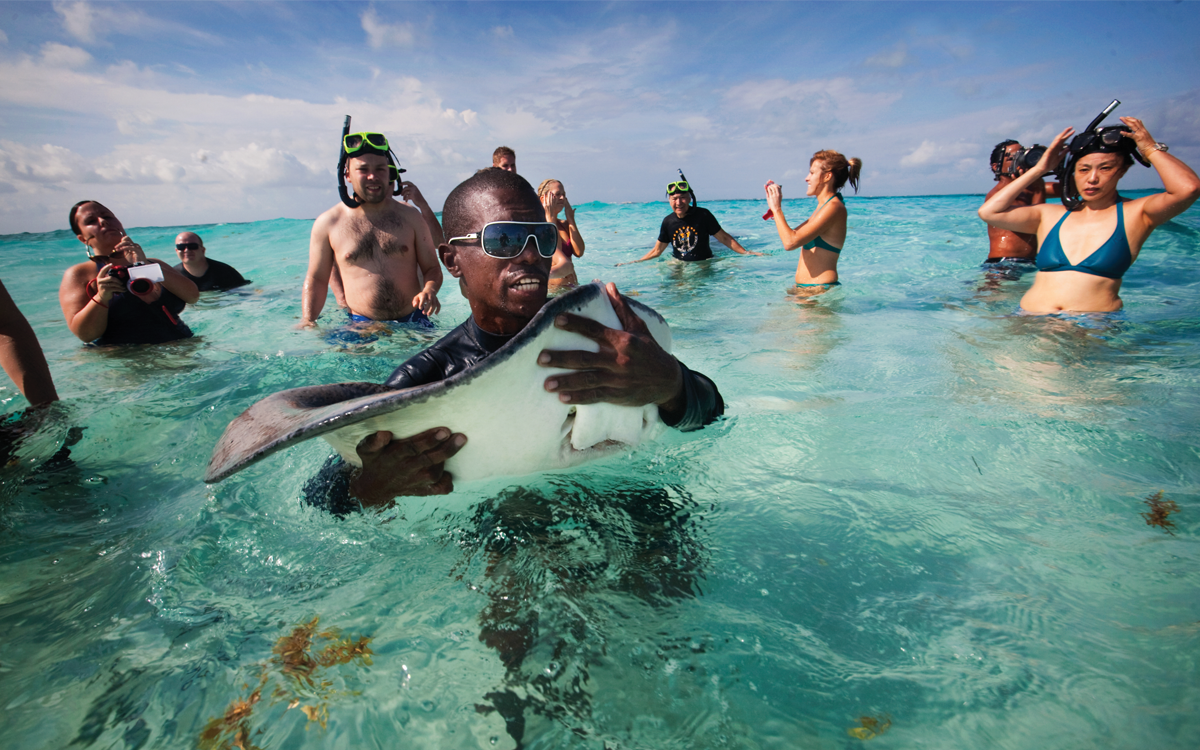
Stingrays off the Cayman Islands. | Photo by Chris Bickford/National Geographic Collection
Across Africa, most national parks, conservancies, and reserves find themselves similarly stressed. Park managers from Zambia to the Democratic Republic of the Congo fear that bushmeat poaching is on the rise and that if the crisis continues, there will be lasting declines of wildlife populations and possibly even local extinctions of some species. Still, Fitzgerald chooses to be optimistic in hoping that the pandemic will lead to a more resilient and sustainable system of conservation funding in the future, with a diversified revenue stream that includes domestic tourism, carbon credits, payments for ecosystem services, and conservation trust funds.
In some places, this is already happening. In a scheme commonly referred to as a debt-for-nature swap, for example, the Seychelles sold $21.6 million of national debt to the Nature Conservancy and private philanthropists in exchange for creating two new marine protected areas that, collectively, are bigger than Germany. Kenya has the world's first externally validated REDD+ program, which generates revenue from carbon credits for private conservancies, community land, and Chyulu Hills National Park. "There are great examples of funding alternatives that have been developed in Africa," Fitzgerald says. "We need to focus on scaling those up."
CONSERVING WILDLIFE IN AFRICA and the rest of the world, frankly, isn't just for the critters. From a selfish point of view, it will also help us. The pandemic exemplifies the direct link between human health and ecological health, something experts have known and warned about for decades. Scientists have yet to pinpoint SARS-CoV-2's exact origin, but they agree that the virus originated in an animal, most likely a horseshoe bat, before making the jump to humans. An intermediary species, possibly a pangolin—an endangered animal sometimes called a scaly anteater—also could have been involved. Whatever the animal origin, China's extensive wildlife trade likely brought the virus or a person it was in contact with to a wet market in Wuhan, where public health experts think SARS-CoV-2 first spread. Of the original environmental samples that officials from China's Center for Disease Control and Prevention collected at the Wuhan market, 31 of the 33 that came back positive for the virus originated in the section that sold wild animals.
Although only a small fraction of China's 1.4 billion residents partake of the wildlife trade, the country is one of the world's largest markets for wildlife. The Chinese wildlife industry was also the source of the recent deadly coronavirus SARS. So when news broke that the trade had unleashed yet another disease, a widespread backlash from Chinese citizens ensued. According to Peter Li, an associate professor of East Asian politics at the University of Houston–Downtown, many people were "boiling with anger" after learning that the country's relatively small group of wildlife traders and consumers had once again jeopardized the interests and health of the entire country, just as they had done with SARS. Partly in response to public anger, the Chinese government enacted a temporary nationwide ban on the consumption of terrestrial wildlife. Politicians and conservationists in China and beyond celebrated the news. As Scott Roberton, director of counter–wildlife trafficking for the Wildlife Conservation Society's Asia program, told me in March, "What China is doing is very, very encouraging, in that they're potentially taking a lead globally on policy to prevent future outbreaks."
Real change requires sustained momentum, however—and China's may already be slowing. At the time of this writing, China had yet to codify its temporary ban on exotic meat into law, and legal loopholes still abound for wild animals used for traditional medicine, killed for fur, or kept as pets. The country did remove pangolin scales from its official pharmacopoeia of traditional medicine—yet it did not outright ban their use and still lists them as ingredients in certain concoctions. The government continues to promote bear bile as a treatment for COVID-19. "Unfortunately, the changes we are seeing today, in all likelihood, will revert back with 'normalization' of the situation," predicts Saket Badola, head of Traffic India.
Other countries' responses have been even more lackluster. Although headlines in July reported that Vietnam had "banned wildlife trade," the government had simply called for enforcement of existing laws. Exotic-animal markets in other nations with a busy wildlife trade and a high potential for disease transmission, including Indonesia and Nigeria, remain open. Few countries have enacted meaningful new wildlife laws; the United States hasn't. Ideally, according to the Wildlife Conservation Society's Walston, US priorities should include developing legislation to end the commercial wildlife trade for human consumption (while ensuring the needs and rights of Indigenous and local communities that depend on wildlife) and creating food-security programs for communities that end their commercial wildlife trade. He also wants the United States and the international community to fund global disease surveillance for spillover events linked to wildlife and to address the root cause of zoonotic epidemics by protecting habitats and biodiversity. Live-wildlife markets, for example, should be closed to limit the opportunities for novel viruses to emerge, and deforestation and other activities that bring people and domestic animals into contact with previously isolated nature should be reduced to lessen the chances of viruses spilling over, Walston says.
The pandemic could usher in fundamental improvements in how we treat animals and the planet. SARS-CoV-2 has given us an opportunity to self-correct. "Evidence is very strong that at our darkest hour, we're actually closest to a major inflection point that would put in place the foundations for a renaissance in nature," Walston says. He cites that extreme poverty has declined sharply over the past 30 years; that 55 percent of the world's population (and counting) now lives in urban settings; and that population growth is decreasing and will stabilize in the not-too-distant future.
If we opted to preserve rather than destroy biodiversity going forward, we would lessen the risk of unleashing the next pandemic-causing zoonotic disease—one that could, unlike the coronavirus that causes COVID-19, kill most of the people it infects. We would also reap the many life-sustaining benefits of improved biodiversity, including carbon sequestration, freshwater provision, and pollination. Unless we act quickly, though, our old, destructive ways will come crawling back, like New York City's rats. As Walston says, "If you think COVID-19 was bad, just wait for COVID-21."
AS GOVERNMENTS and international organizations grapple with these issues on the macro scale, people too might find themselves reevaluating where they stand vis-à-vis the natural world. Some will no doubt emerge from the pandemic with a new appreciation for nature—one nurtured, perhaps, through the patient joy of watching a tomato plant sprout from a seed or a newfound love of birding in their own backyard. Downloads of Cornell University's bird-identification app, Merlin, increased by more than 100 percent from 2019 to 2020, and Global Big Day—an annual bird-spotting competition hosted by Cornell in May—produced a record number of sightings, with over 2 million birds recorded around the world, representing nearly 6,500 species.
In some cases, though, the opposite is happening—people are recoiling from the natural world, viewing it as the source of their misery. Huabin Zhao, an ecologist at Wuhan University, has noted an uptick in anti-wildlife sentiment, especially directed toward bats. In China, some have proposed mass bat extermination, while in the United States, a worried San Jose resident wrote to her local newspaper asking if there was a way to "get rid" of the bats living in a nearby park to "save some lives." At the last minute, officials in Peru stopped a planned attack on a colony of mouse-eared bats, but in Egypt, people set fire to an abandoned building full of sleeping fruit bats. "The backlash really poses a serious threat to wildlife—this is not just talk," Zhao says. He fears that people could come to shun nature, and children could become scared of animals.
Newfound love or fear of nature are the extremes, though. Most individuals, once a vaccine finally arrives and the pandemic fades into memory, will probably return to the approach to nature they held before. The same applies on a national and international scale. Wildlife will recede into the background, figuratively and literally, and we'll forget what we've learned. As I watch discussions about ending the wildlife trade stall, I recall something Alonso Aguirre, a wildlife disease ecologist at George Mason University, told me in January when I reported my first coronavirus story: "Once a disease jumps into humans, all the responses are reactive, and the focus is on human health. We never go back to the source of why things happen in the first place."
This same human failing applies whether we're talking about reducing the risk of future pandemics or curtailing rat infestations in New York City. "No one thinks about rats except when there's all of a sudden a bunch of them scurrying in front of the beautiful Brooklyn brownstones," says Corrigan, the urban rodentologist. "We wait and wait and then react." But like the pandemic itself, our urban rat problem is of our own making. The rodents ballooned into the millions in New York City and elsewhere because they were well-fed, and they were well-fed because officials refused to clean up garbage-collection systems. As Corrigan says, "we can't even put out the trash right."
We could have done a lot of things right. Cities everywhere could have taken advantage of the pandemic's pause on mass consumption to revamp their waste-management systems, banishing rats for good. Instead, in New York City at least, officials took two steps back by suspending curbside compost pickup for at least a year. When the garbage flow begins again, the hardened rodent survivors that come crawling out of the sewers will find mountains of refuse laden with nourishing scraps. Nests will quickly be rebuilt, pups will be birthed, and the rat population will surge back. In fact, it's already happening. On a warm June night, days before the phase-two reopening went into effect, I took a stroll through Manhattan's Sara D. Roosevelt Park. The garbage bins were overflowing, and the bushes were alive with scurrying rodents. I jumped out of the way as a Chihuahua-size rat carrying an oversize dinner roll sauntered out in front of me, blocking the sidewalk and staring up with defiant, beady eyes.
The rat problem is readily solvable, yet we allow it to continue. Rats aren't just an aesthetic affront, either. A 2014 study led by scientists from Columbia University revealed that New York City rats are infected with E. coli, Clostridium difficile, Salmonella enterica, and other disease-causing bacteria as well as a wide range of novel viruses. Even so, Corrigan suspects that it would take an existential threat—another pandemic, say—to make us "clean up our own nest," as he puts it. "If the rats started transmitting the next disease that kills us quickly, you better believe we wouldn't be doing trash the way we do."
Wouldn't we? I'm not so sure.
This article appeared in the November/December 2020 edition with the headline "Nature Is Returning."
 The Magazine of The Sierra Club
The Magazine of The Sierra Club
